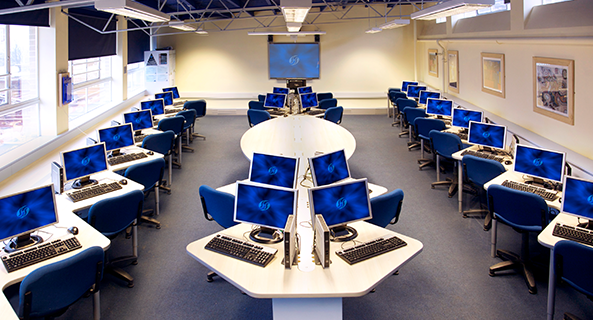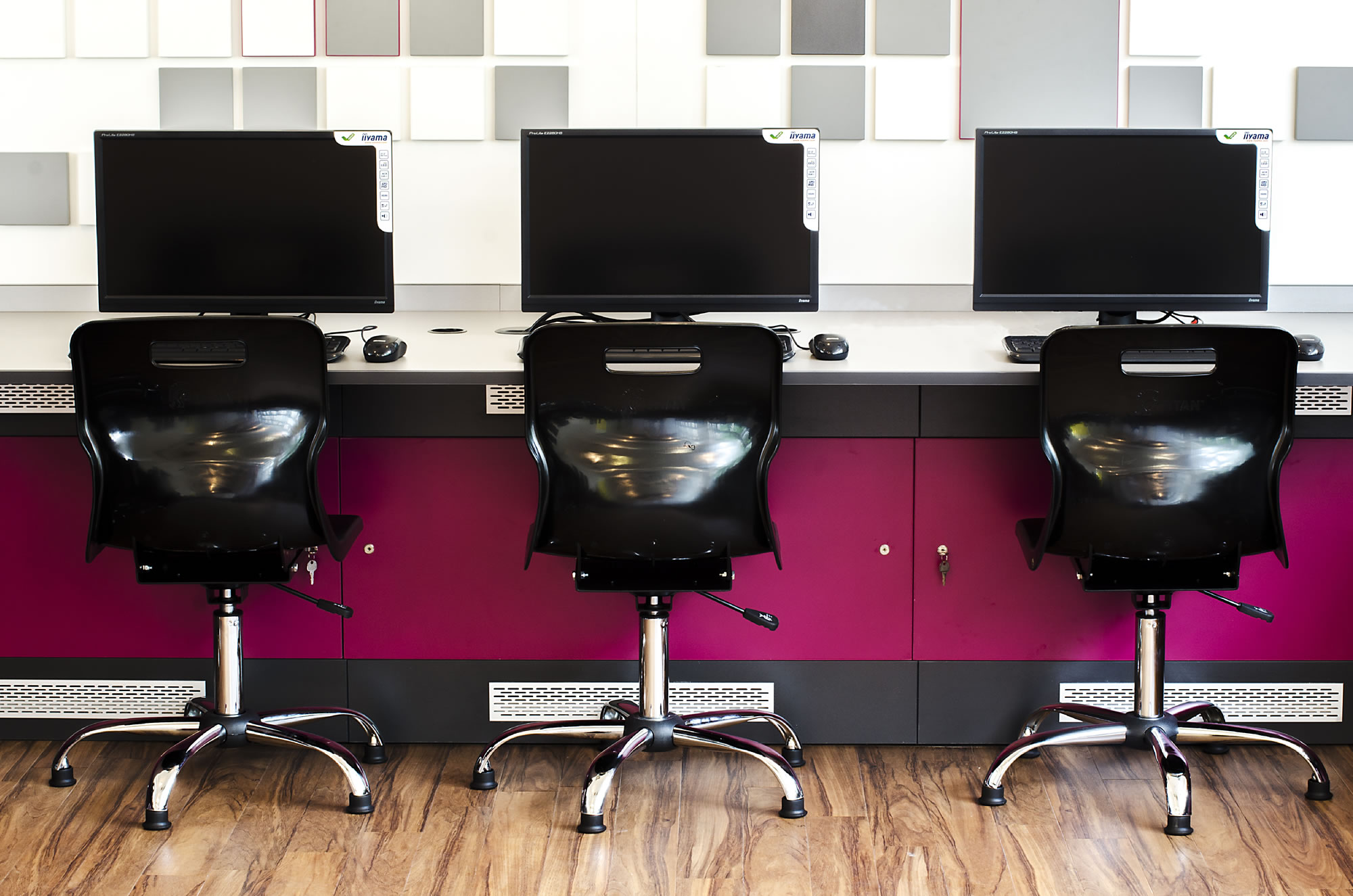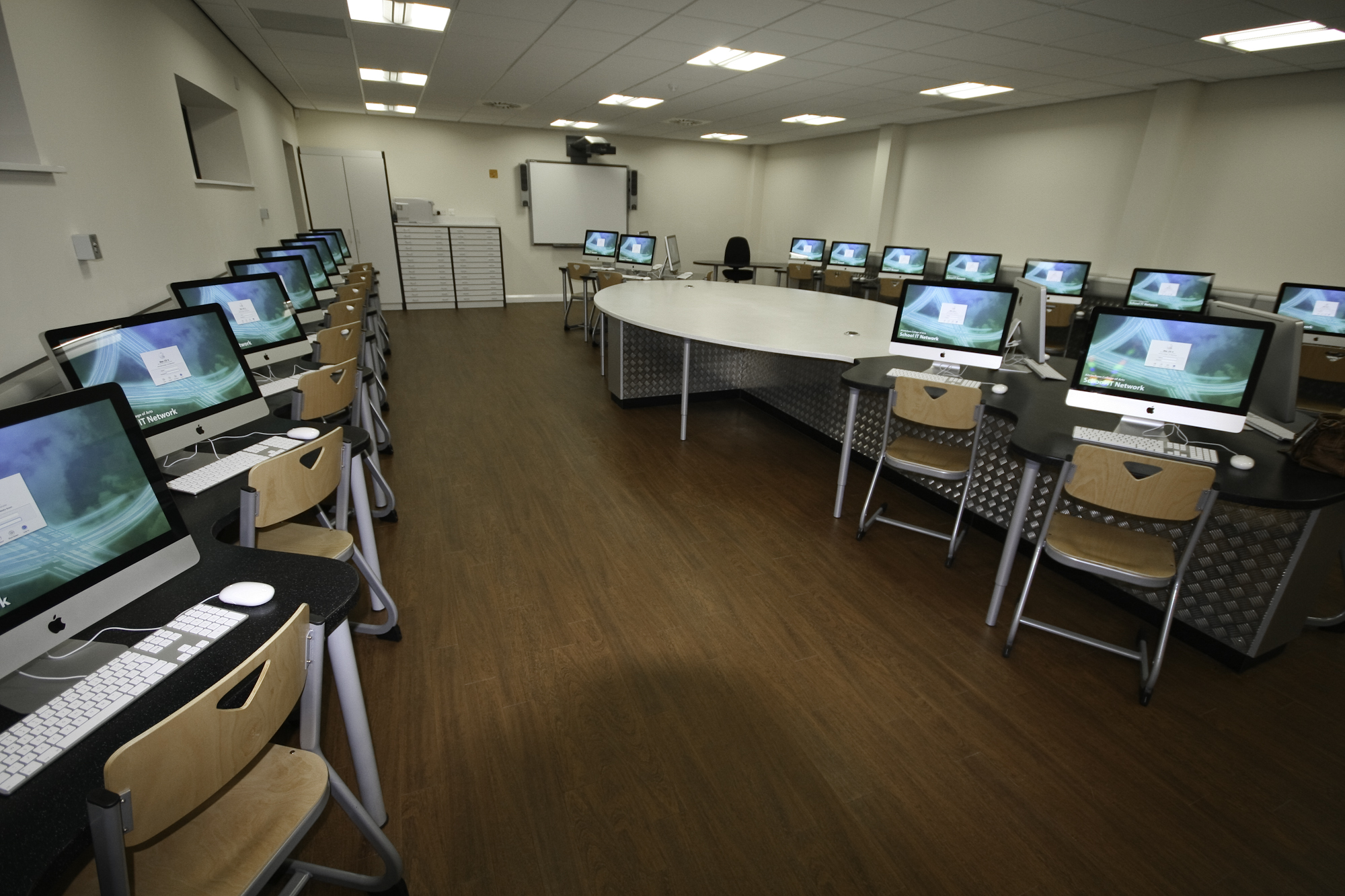Computer Science is back! We explore what makes an excellent ICT suite
The new computer science syllabus is to include programming and coding, together with logical and creative thinking and the design of programmes like computer games. An additional campaign named ‘The Hour of Code’ was also launched, with the aim of teaching students to code in just sixty minutes.
These developments mean that schools will need to be prepared and ensure that their ICT suites are prepared to cope with the renewed interest in this exciting subject.
Here we look at what furniture elements contribute to an excellent ICT suite:
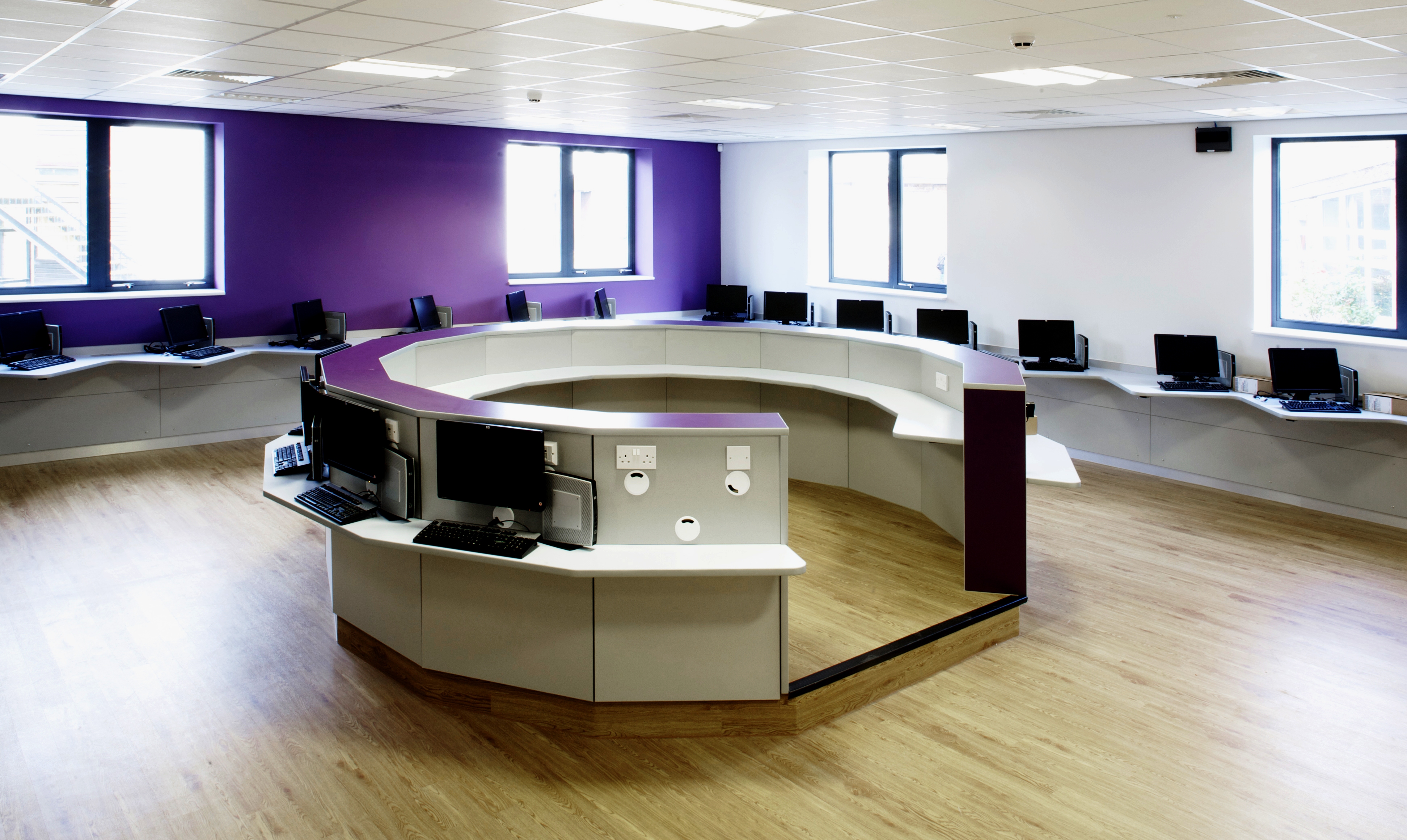
Work stations
One of the most important considerations in an ICT suite is the workstations. With budgets being stretched to the limit, cost is always a primary consideration – but there are many more aspects of the workstation that must be taken into account concerning both choice and positioning.
Workstations need to be sufficiently spaced for the students to be comfortable, and should allow room for equipment as well as books and papers. They also need to be deep enough to allow students to rest their arms and wrists while they are typing. Work stations should accommodate both left and right handed students, and the spacing should allow students to work either solo or in pairs.
The choice of material is significant – for example, the surface should be non-reflective and an anti-slip work top is desirable. Work stations that are built from quality materials are desirable for durability and safety reasons.
Naturally, ICT suites usually need to accommodate students of different heights and ages and it is therefore advisable for schools to choose chairs with heights that can be adjusted to meet the individual student’s needs. Chairs that can swivel also make it easier for students to turn towards the teacher or board.
Work stations need to be spaced to allow teachers to move around the room and so that the exits to the room are not obstructed. Additionally, spacing should accommodate students with disabilities, and should allow easy access to shared equipment such as printers.
The angled saw-tooth benching installed at Clayesmore School is a great example of well-designed work stations, giving students extra space and teachers’ additional visibility over the classroom.
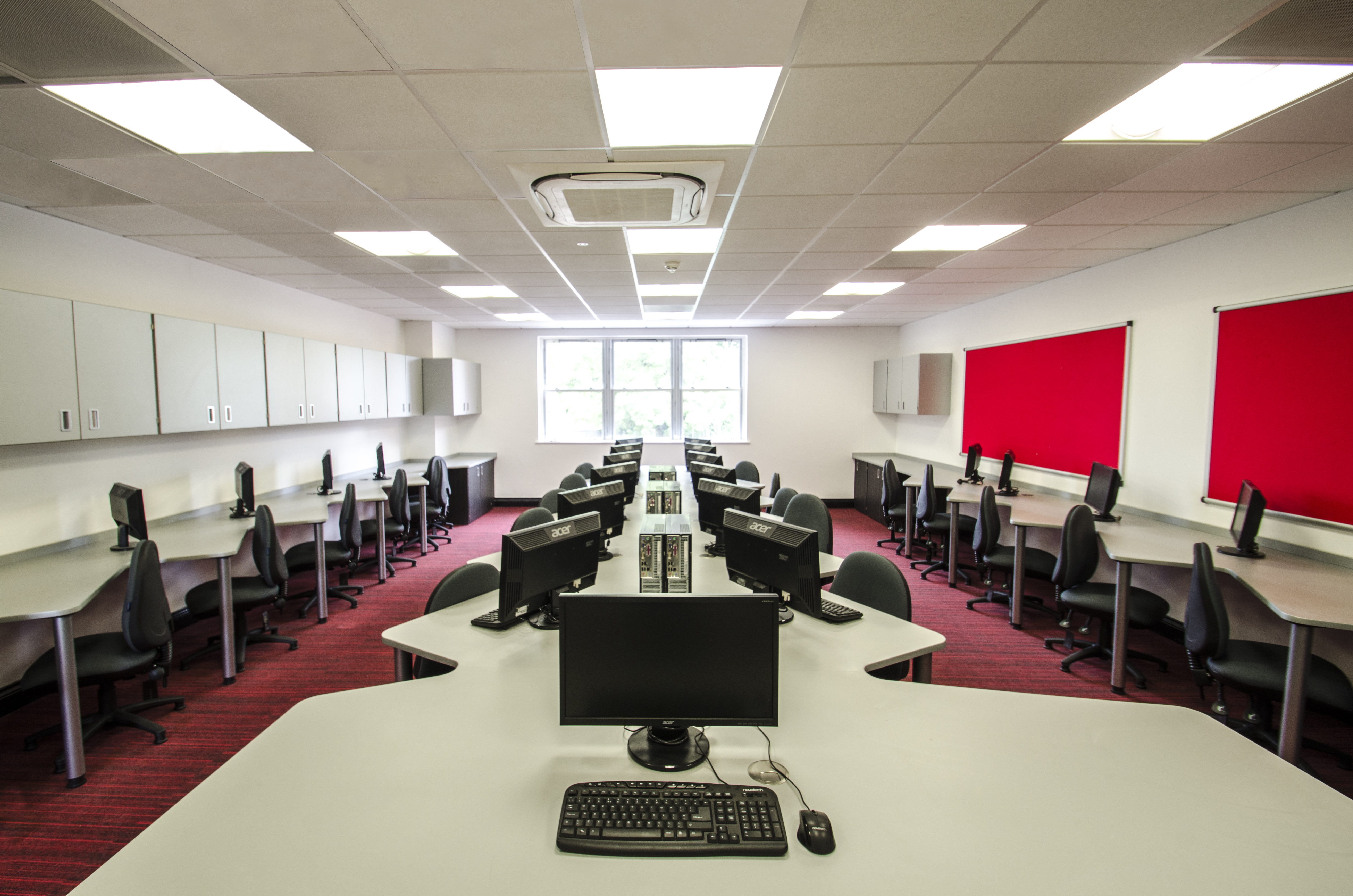
Teacher’s station
Incorporating a teacher’s station in an ICT suite gives the room a focal point for instruction, presentations and demonstrations. The teacher’s desk needs to be set sufficiently apart from the screen so that the students’ view is not obstructed. The area should include a computer work station that ideally is linked to presentation technology such as an interactive whiteboard. The area would also benefit from space that allows the students to gather for small group discussions. Additionally a display board can be an excellent idea, allowing the teacher to put up helpful materials and showcase examples of excellent work completed by the students.
Storage
There are plenty of items that need to be stored in an ICT suite, and it is easy to forget just how much there is that needs to be tucked away, often under lock and key. Space should be made for kits and spare equipment, together with consumables such as paper and ink cartridges. More expensive equipment such as digital cameras may need its own storage locker.
Conclusion
There are many different aspects of an ICT suite that can impact a student’s comfort and therefore their enjoyment of the lesson. The design and layout of the ICT suite also has a significant impact on the teacher’s ability to deliver the learning material in the most effective way.
With the Government’s plans to increase focus on ICT subjects, schools need to invest time and expertise in their ICT suites to ensure that they not only meet all EU Regulations but offer an environment that nurtures their students’ interest in a subject which is likely to be a big focus for learning in the near future.

